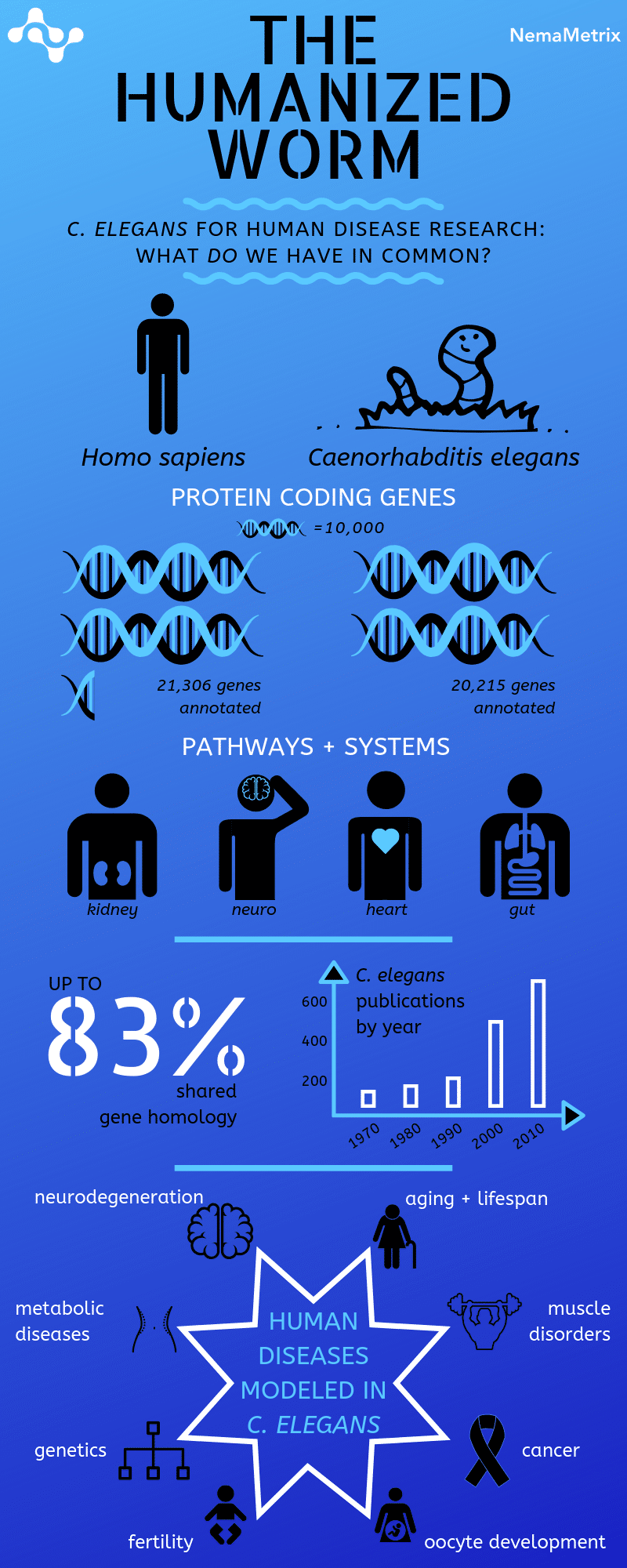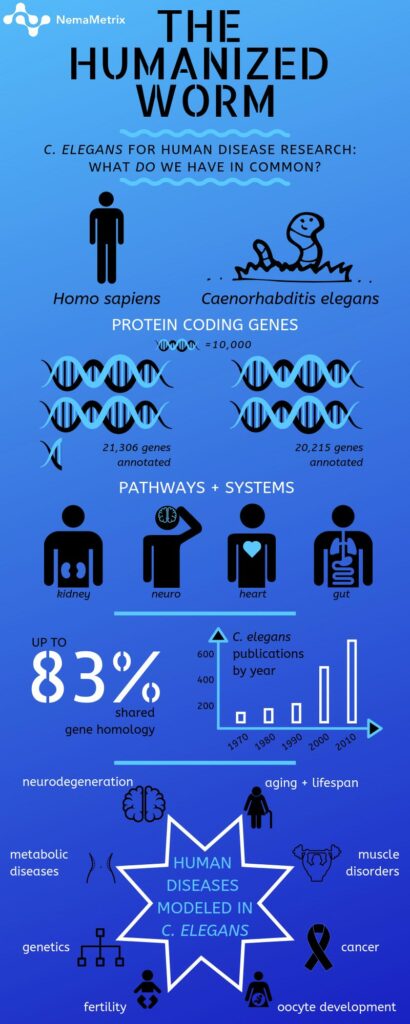Humanized model organisms are powerful biological models that allow scientists to study human disease genes in simpler contexts without losing the value of in vivo studies. In either C. elegans or Zebrafish, a native model organism gene can be replaced by a human gene with the same biological function. After this, mutations can be introduced into the human gene to make a disease variant. Alternatively, the human gene can be expressed in specific tissues or stages of development.
Despite being microscopic in size, C. elegans are perfect for humanization due to their similarities with the human genome, their short lifespan, and many more reasons. Check out the infographic below to learn a bit more about why C. elegans make an incredible animal model to use in humanized transgenics.

References:
- Pertea M, et al. (2018) Thousands of Large-Scale RNA Sequencing Experiments Yield a Comprehensive New Human Gene List and Reveal Extensive Transcriptional Noise. CSH bioRxiv 332825 (preprint); doi: https://doi.org/10.1101/332825.
- Salzberg, S. (2018) Open Questions: How Many Genes Do We Have? BMC Biology. 16: 94.
- Hiller LDW, et al. (2005) Genomics in C. elegans: So Many Genes, Such a Little Worm. Genome Res. 15: 1651-1660.
- WormBase Web Site. http://www.wormbase.org. Release WS268 (21 September 2018).
- Lai CH, et al. (2000) Identification of Novel Human Genes Evolutionarily Conserved in Caenorhabditis elegans by Comparative Proteomics. Genome Res. 10(5): 703-713.
- Dietrich MR, et al. (2014) Publication Trends in Model Organism Research. Genetics. 198(3): 787-794.
- Lou S, et al. (2010) TGF-β and Insulin Signaling Regulate Reproductive Aging via Oocyte and Germline Quality Maintenance. Cell. 143(2): 299-312.
- Templeman, NM, et al. (2018) Insulin Signaling Regulates Oocyte Quality Maintenance with Age via Cathepsin B Activity. Curr Bio. 28(5): 753-760.
- Markaki M and Tavemarakis N. (2010) Modeling Human Diseases in Caenorhabditis elegans. Biotechnol J. 5:1261-1276.

